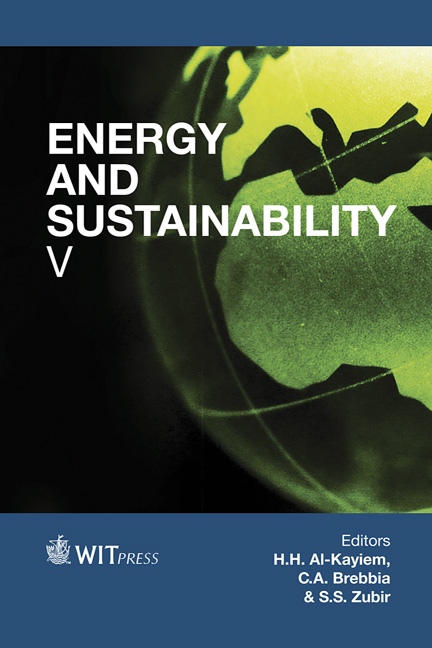Mixed Transition Metal Oxides For Efficient Electrochemical Splitting Of Water To Hydrogen And Oxygen
Price
Free (open access)
Transaction
Volume
186
Pages
8
Page Range
139 - 146
Published
2015
Size
1,145 kb
Paper DOI
10.2495/ESUS140121
Copyright
WIT Press
Author(s)
M. Frites, A. Simpson, R. Gautam, S. U. M. Khan
Abstract
In this study non-noble and non-rare metal based mixed transition metal oxides were synthesized by spray pyrolysis and used as electrocatalysts for the efficient splitting of water to hydrogen and oxygen in alkaline medium. The mixed oxides of nickel and cobalt (Ni-Co-oxide) of specific compositions (3:1 ratio) generated the much smaller Tafel slopes (210 mV decade−1) compared to 330 mVdecade−1 and 440 mV decade−1 for Co-Oxide and Ni-oxide respectively indicating its enhanced electro-catalytic activity for oxygen evolution reaction (OER) during water splitting. Also, the mixed oxides of Ni and Fe (Ni-Fe-oxide) of specific compositions (4:1 ratio) generated the smaller Tafel slopes (360 mV decade−1) compared to 440 mVdecade−1 and 500 mV decade−1 for Ni-oxide and Fe-oxide respectively for OER during water splitting. At the measured potential of 1.0 V/SCE the current density of 130.0 mA cm−2 was observed for water splitting at Ni-Co mixed oxide compared to 60.0 mA cm−2, 31.0 mA cm−2, 30.0 mA cm−2 and 28.0 mA cm−2 at mixed Ni-Fe oxide (4:1 ratio), Co-oxide, Ni-Oxide and Fe-oxide respectively. These results show more than four-fold increase in rate of water splitting at the mixed Ni-Co oxide and more than two-fold at mixed Ni-Fe oxide due to synergetic effects compared to their individual oxides. An order of magnitude of higher values of current density for water splitting on these electrodes compared to recently reported results can be attributed also to high internal surface area due to porosity of the oxide films synthesized by spray pyrolysis method as it is observed in SEM results.
Keywords
mixed transition metal oxides, electrocatalytic anodes, water splitting, water oxidation, porous films, oxygen evolution





